Mount Everest
Mount Everest, known in Nepali as Sagarmatha and in Tibetan as Chomolungma, stands as the highest peak in the world at an impressive height of 8,848.86 meters (29,031.7 feet). It is located in the Mahalangur Himal sub-range of the Himalayas and straddles the border between Nepal and the Tibet Autonomous Region of China.
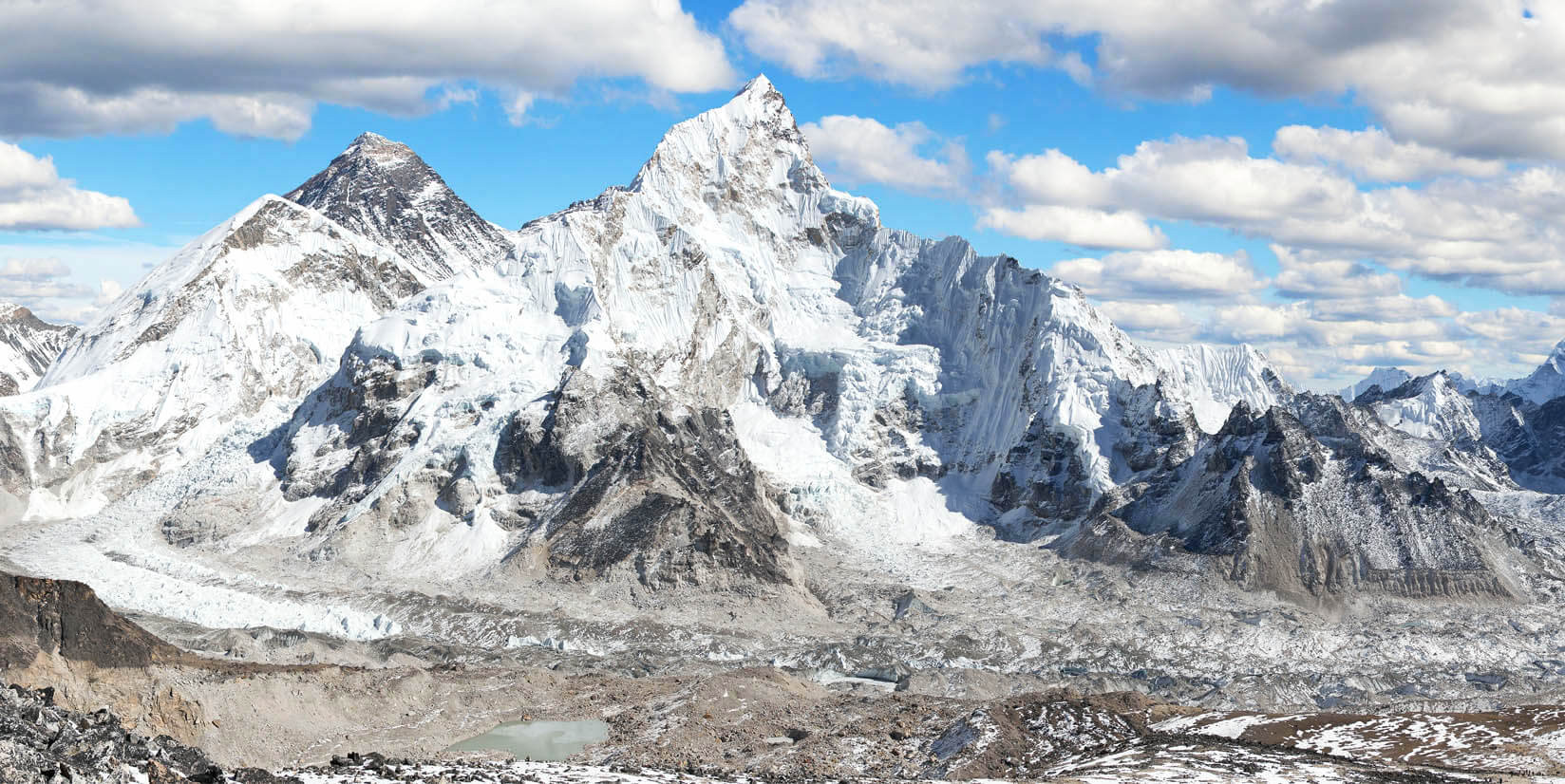
-
Significance and History: Mount Everest holds profound cultural significance, especially for the local Sherpa community and Tibetans, for whom it has spiritual importance. It was first identified as the world's highest peak in 1852 during the Great Trigonometrical Survey of India, and it was subsequently named after Sir George Everest, the British Surveyor General of India.
-
Climbing History: The first successful ascent of Mount Everest was achieved by Sir Edmund Hillary from New Zealand and Tenzing Norgay, a Sherpa of Nepal, on May 29, 1953. This historic climb was made via the Southeast Ridge route, which remains one of the two main routes used today, the other being the North Ridge route from Tibet.
-
Tourism and Trekking: Mount Everest attracts climbers of all levels, from seasoned mountaineers to capable amateurs looking to hire professional guides. While many aim to reach the summit, others find satisfaction in trekking to the Everest Base Camp, situated at an elevation of about 5,364 meters (17,598 feet) on the south side in Nepal. This trek offers stunning views of the peak and the opportunity to experience the rich culture of the Sherpas.
-
Challenges and Conservation: Climbing Everest presents significant challenges, such as high altitude sickness, weather extremes, and the physical demands of the climb itself. The mountain also faces issues related to over-tourism, including waste management and environmental degradation.
-
Cultural Impact: Mount Everest continues to be a symbol of exploration and adventure. It features prominently in books, movies, and stories that speak to the human spirit's perseverance and determination to overcome the most daunting challenges.
As a beacon for mountaineers, adventure seekers, and those fascinated by its majestic height and symbolic nature, Mount Everest remains one of the most iconic and revered peaks in the world.
Kathmandu Valley
Kathmandu Valley, the heart of Nepal's culture, history, and governance, is a vibrant and spiritually rich area. Surrounded by mountains, the valley encompasses the capital city, Kathmandu, along with two other historic cities, Patan (Lalitpur) and Bhaktapur. This region is renowned for its dense concentration of UNESCO World Heritage Sites and a history that stretches back thousands of years.
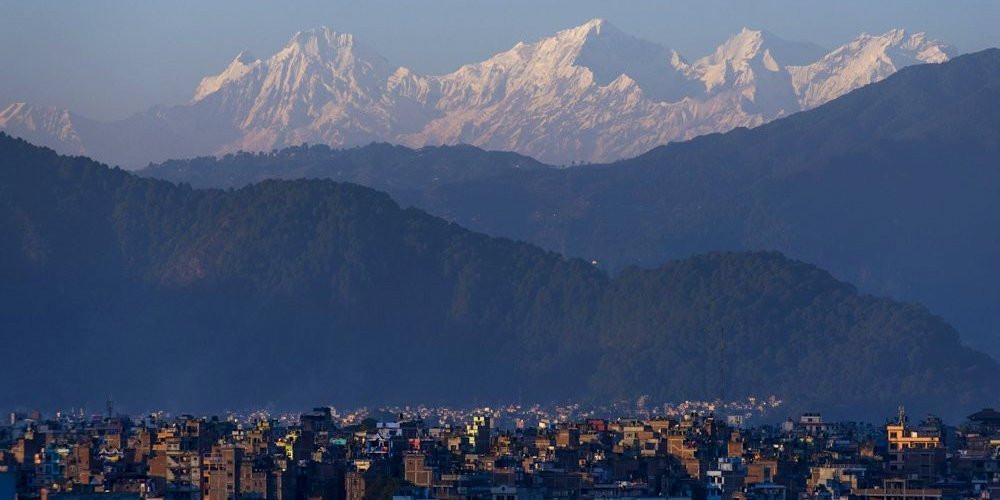
Historical Significance: Kathmandu Valley has a storied past that intertwines with the legends of its origin, said to have been a large lake drained by Manjushree, a bodhisattva of wisdom, making it habitable. It has been a cultural and political hub of Nepal since ancient times and once served as a significant trade route between India and Tibet.
Cultural Richness: The valley is a melting pot of Hinduism and Buddhism, which is reflected in its myriad of temples, stupas, and monasteries. These religious sites include the famous Swayambhunath Stupa, Pashupatinath Temple, and Boudhanath Stupa, each offering a unique glimpse into the spiritual life of the Nepali people. The architecture of the valley is a remarkable feature, characterized by pagoda-style wooden carvings and intricately decorated palaces that date back to the Malla dynasty.
UNESCO World Heritage Sites
-
Kathmandu Valley boasts several UNESCO World Heritage Sites, which include:
-
Kathmandu Durbar Square: Once the seat of the kingdom's royal family, it is known for its exquisite architecture and the Kumari Ghar, home to the living goddess, Kumari.
-
Patan Durbar Square: Located in Lalitpur, it is famous for its artistic heritage and fine crafts, particularly metalwork and stone carvings.
-
Bhaktapur Durbar Square: This well-preserved square offers a look into a vibrant past with its traditional buildings and the famous Nyatapola Temple.
Tourist Attractions: Apart from the historical sites, Kathmandu Valley is also home to bustling markets, artisan workshops, and local festivals that offer deep insights into Nepali life. The valley's rich culinary scene, from street food to fine dining, reflects the diversity of its cultural influences.
Kathmandu Valley not only serves as the gateway to Nepal but also as a capsule of its historical, cultural, and spiritual legacies, making it a must-visit for anyone wanting to experience the essence of Nepali culture. Whether you're exploring its ancient sites, wandering through its markets, or engaging with the local community, Kathmandu Valley offers a profound and enriching experience.
Pokhara
Pokhara, often referred to as the "tourist capital" of Nepal, is a remarkable city set amidst a backdrop of stunning natural beauty. Located about 200 kilometers west of Kathmandu, this enchanting city lies alongside the serene Phewa Lake and is framed by the spectacular Annapurna range of the Himalayas. Pokhara is a popular starting point for trekkers undertaking the famous Annapurna Circuit, as well as a favored destination for those seeking relaxation and adventure within its scenic confines.

-
Natural Beauty: Pokhara is renowned for its tranquil lakes, with Phewa Lake being the largest and most popular in the city. The lake is perfect for boating, especially with the enchanting view of the reflection of Mount Machhapuchhre (Fishtail) in its waters. The city is also home to the Seti Gandaki River, which has created spectacular gorges in and around the area.
-
Adventure Sports: The city is a hub for adventure sports, offering paragliding, zip-lining, and ultra-light flights that provide breathtaking aerial views of the surrounding mountains and landscapes. Pokhara also serves as a base for mountain biking and rafting enthusiasts looking to explore the rugged terrains and fast-flowing rivers of the region.
-
Trekking: As the gateway to the Annapurna region, Pokhara is the starting point for numerous treks ranging from a few days to several weeks. The most popular treks include the Annapurna Base Camp trek and the Poon Hill trek, both of which offer spectacular views of the Himalayan peaks and insights into the life of rural Nepalese communities.
-
Cultural Attractions: Besides its natural and adventure attractions, Pokhara is rich in cultural heritage. The city’s Tibetan settlements are vibrant centers of Buddhist culture and tradition, where visitors can learn about the lifestyle and rituals of Tibetan refugees in Nepal. The Bindhyabasini Temple, dedicated to the goddess Bhagwati, provides a spiritual experience amidst the old bazaar of Pokhara.
-
Relaxation and Wellness: Pokhara also caters to those looking to unwind, with its array of spas, yoga retreats, and wellness centers offering traditional Ayurvedic treatments and therapies. The laid-back atmosphere of the lakeside area, with its cafes, bars, and shops, makes it a perfect place to relax and enjoy the views.
-
Caves and Waterfalls: The city hosts several geological wonders like the Gupteshwor Mahadev Cave, which houses a revered Shiva temple, and the Davis Falls, a stunning waterfall that plunges into a deep gorge. These attractions add to the diverse experiences available in Pokhara.
Pokhara's blend of natural beauty, adventure, and tranquility makes it a unique destination that captures the essence of Nepal’s diverse allure. Whether you are seeking thrilling adventures or peaceful moments in nature, Pokhara offers an array of activities and experiences that cater to all preferences.
Chitwan National Park
Chitwan National Park is one of Nepal's most treasured natural wonders and a significant draw for wildlife enthusiasts and nature lovers visiting the country. Established in 1973 and designated as a UNESCO World Heritage Site in 1984, this park spans over 932 square kilometers of subtropical lowlands in the Inner Terai regions of south-central Nepal.

-
Biodiversity and Wildlife: Chitwan National Park is renowned for its biodiversity. It is home to over 700 species of wildlife, including some of the most elusive and endangered species, such as the Royal Bengal tiger, one-horned rhinoceros, and the gharial crocodile. The park also supports a significant population of elephants, leopards, Indian bison, sloth bears, and several species of deer. Additionally, it is a bird watcher's paradise, with over 540 recorded species of birds, making it one of the best bird-watching sites in Asia.
-
Safari Experiences: The park offers various ways to explore its rich flora and fauna. Visitors can enjoy jeep safaris, guided jungle walks, and canoe trips along the Rapti River, which provide opportunities to witness animals in their natural habitats. Elephant-back safaris were once a popular attraction but have seen a decline due to ethical considerations. Today, more sustainable practices are encouraged to ensure the conservation of wildlife and habitats.
-
Cultural Interactions: Chitwan also provides a cultural dimension to its natural allure. The indigenous Tharu community, known for their unique culture and traditions, lives in and around the park. Many lodges and tour programs include cultural shows and village walks that introduce visitors to the Tharu people's way of life, their traditional dances, and their homes, which are built from local materials.
-
Conservation Efforts: Chitwan National Park is also a success story in conservation. The park's efforts in the preservation of the one-horned rhinoceros and the Royal Bengal tiger are globally recognized. The active involvement of local communities in conservation has been key to the park's success, helping to balance ecological needs with economic benefits.
-
Visitor Information: The park is accessible from Kathmandu by road or a short flight to Bharatpur, followed by a brief drive. The best time to visit Chitwan National Park is during the dry season from October to March, when the weather is cooler and visibility is best for wildlife viewing. The monsoon season from June to September should generally be avoided due to heavy rainfall and flooding in the area.
Chitwan National Park offers a compelling blend of natural beauty, wildlife discovery, and cultural enrichment. It stands as a testament to Nepal's commitment to preserving its natural heritage and offers a profound experience that goes beyond typical tourist activities, providing deep insights into the importance of conservation and the role of community in environmental stewardship.
Lumbini
Lumbini, situated in the Terai plains of southern Nepal, is revered as the birthplace of Siddhartha Gautama, who became known as Buddha. Recognized as a UNESCO World Heritage Site, this sacred area attracts thousands of pilgrims and tourists from around the world, drawn to its spiritual significance and peaceful ambiance.
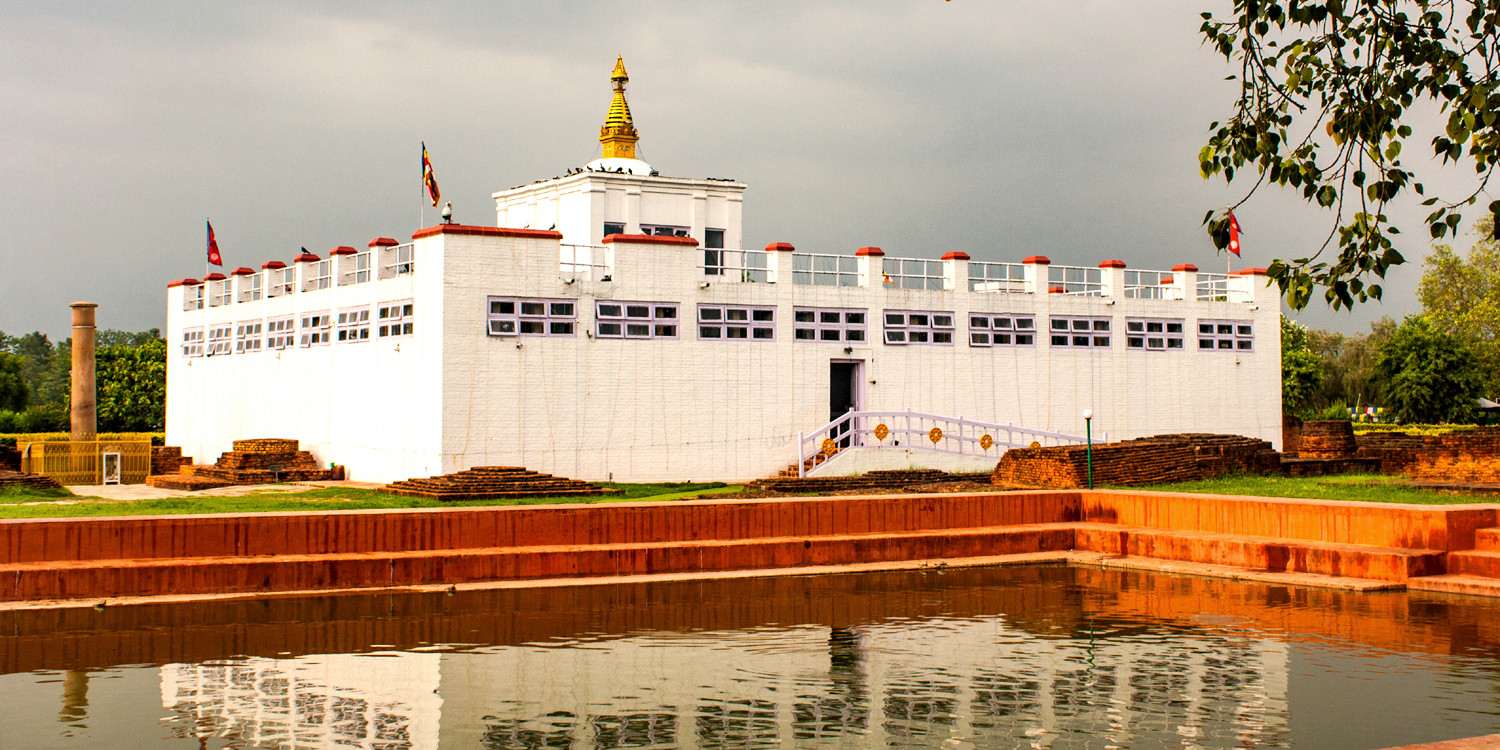
-
Historical Significance: According to Buddhist tradition, Queen Mayadevi gave birth to Siddhartha Gautama in 623 BC while holding onto a branch of a sal tree in the Lumbini garden. This historical event marks Lumbini as one of the four main pilgrimage sites associated with the life of Buddha, the others being Bodh Gaya, Sarnath, and Kushinagar.
-
Archaeological and Spiritual Sites: The centerpiece of Lumbini is the Maya Devi Temple, which houses an ancient stone relief depicting the birth scene of Buddha. This temple stands next to a sacred pool (Puskarni) where it is said that Queen Mayadevi took a bath before giving birth. Nearby, the Ashoka Pillar, erected by Emperor Ashoka in 249 BC, officially marks the site as Buddha’s birthplace and bears an inscription confirming Lumbini’s significance.
-
Monastic Zone: Lumbini is designed with a master plan that divides the area into a monastic zone where only monasteries can be built, and no shops, hotels, or restaurants are allowed. The eastern zone contains Theravadin monasteries, while the western zone holds Mahayana and Vajrayana monasteries. Each structure reflects the unique architectural traditions of the respective countries that sponsored them, such as Thailand, Myanmar, Germany, and China, offering a diverse cultural experience.
-
Meditation and Reflection: The area also includes meditation centers where visitors can practice meditation and attend workshops or teachings, often led by visiting monks and nuns. The Lumbini Development Trust organizes regular walking tours of the monastic zones, providing insights into Buddhist philosophy and the history of the site.
-
Festivals and Celebrations: Lumbini is particularly vibrant during the Buddha Jayanti (Buddha’s birthday) celebration, which occurs on the full moon day in May. Devotees from various countries come to participate in prayers, chanting, and processions, making it a profoundly enriching experience.
Visiting Lumbini offers a profound connection to the roots of Buddhism, providing a peaceful and contemplative experience away from the hustle and bustle of Nepal's more tourist-heavy areas. It's a place that offers not just historical insights but also a chance to reflect, meditate, and gain a deeper understanding of Buddhist teachings.
Patan and Bhaktapur
Patan and Bhaktapur are two of the three royal cities in the Kathmandu Valley, each known for its rich cultural heritage and unique historical significance. Both cities are recognized UNESCO World Heritage Sites and are celebrated for their traditional architecture, vibrant festivals, and intricate handicrafts. Exploring these cities offers a deep dive into the heart of Nepal's artistic and cultural expressions.
Patan: The City of Artisans
Patan, also known as Lalitpur (the City of Beauty), is located just across the Bagmati River from Kathmandu. It is renowned for its skilled artisans and rich cultural heritage. Patan's Durbar Square is the focal point of the city, featuring a concentration of ancient temples, palaces, and courtyards that date back to the Malla dynasty.
Key Highlights:
-
Patan Durbar Square: Home to the palace of the former Patan royal family, this square is a cluster of fine ancient art exemplified in every temple, shrine, and palace façade.
-
Hiranya Varna Mahavihar (Golden Temple): A few minutes walk from the Durbar Square, this Buddhist monastery is adorned with golden facades and intricate decorations.
-
Patan Museum: Located in an old Malla palace, the museum displays the traditional sacred art of Nepal in an exceptionally well-curated environment.
-
Artisan Workshops: Patan is famous for its metal crafts and traditional thankas. Visitors can observe artisans at work and purchase crafts directly from the creators.
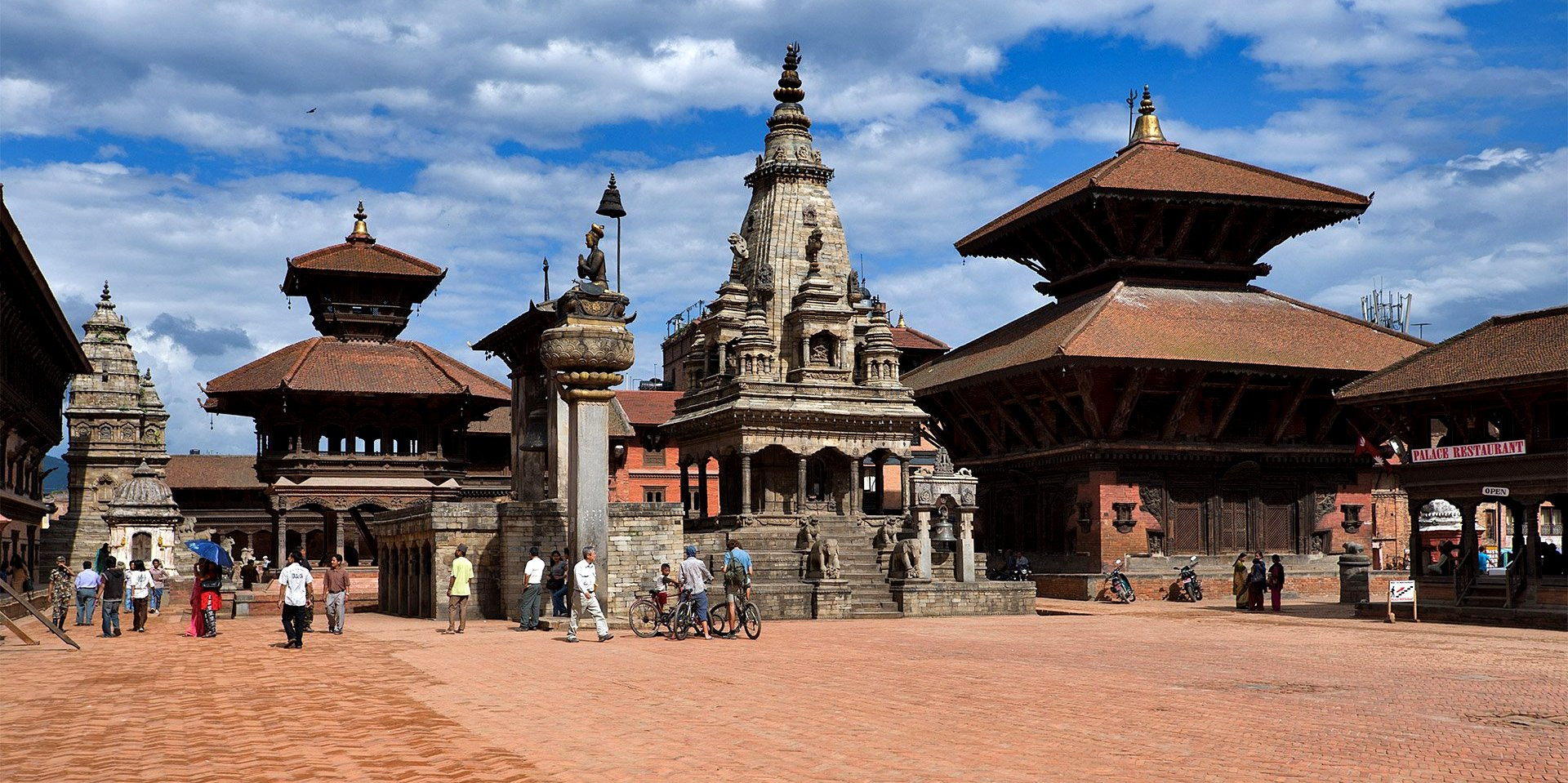
Bhaktapur: The Cultural Gem
Bhaktapur, or Bhadgaon as it is also known, lies to the east of Kathmandu and is the third of the royal cities. Bhaktapur's heart is its Durbar Square, which, unlike those in Kathmandu and Patan, has remained relatively untouched by modernization and retains a distinctly medieval character.
Key Highlights
-
Bhaktapur Durbar Square: This square features some of the most stunning architectural showpieces of the Newar culture, including the famous Nyatapola Temple and the Palace of Fifty-Five Windows.
-
Nyatapola Temple: Standing five stories tall, this temple is the highest in Nepal and is a significant example of temple architecture and craftsmanship.
-
Pottery Square: Here, visitors can watch potters at their wheels or try their hands at molding clay pots themselves.
-
Dattatreya Temple: Built from a single tree, this temple showcases the intricate woodworking skills that Bhaktapur is famous for.
Cultural Festivals: Both cities are lively centers of festivals, most notably during the Nepali New Year (Bisket Jatra) in Bhaktapur, where elaborate rituals and processions take place, and the chariot festival (Rato Machhindranath Jatra) in Patan, which is one of the oldest and longest celebrations in the country.
Conservation and Tourism: Both cities have undergone significant restoration and conservation efforts, particularly after the damage from the 2015 earthquake. These efforts aim not only to preserve the physical structures but also to keep the intangible heritage alive for future generations.
Visiting Patan and Bhaktapur allows travelers to step back in time and experience the glory of Nepal's ancient art, architecture, and traditions amidst the backdrop of everyday life that continues to be steeped in centuries-old customs and practices. These cities provide a stark contrast to the bustling capital of Kathmandu, offering a more laid-back and profoundly cultural experience.
Nagarkot
Nagarkot, nestled at the edge of the Kathmandu Valley, is famed for its panoramic views of the Himalayas, including Mount Everest and other peaks of the eastern Nepal Himalayas. Situated about 32 kilometers east of Kathmandu at an elevation of approximately 2,195 meters (7,200 feet), it is a popular spot for those seeking natural beauty and tranquility away from the hustle and bustle of city life.
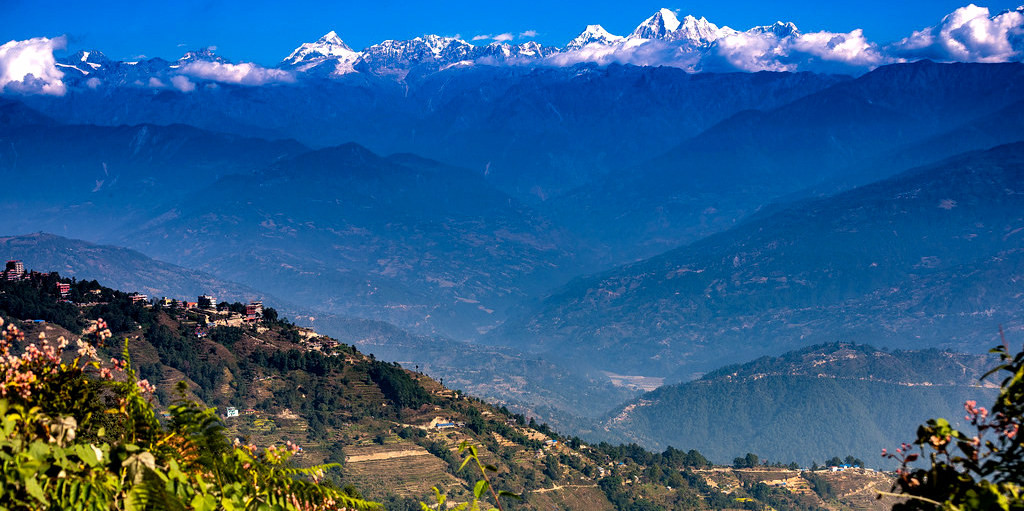
-
Scenic Views and Natural Beauty: Nagarkot is arguably best known for its sunrise and sunset views over the Himalayas. On clear days, the panoramic views stretch from Dhaulagiri in the west to Kanchenjunga in the east, with Everest visible on the horizon. The place provides a breathtaking display of golden light washing over the peaks as the sun rises and sets, which is a major draw for visitors.
-
Hiking and Outdoor Activities: Nagarkot is surrounded by thickly forested hills of pine trees, which offer an excellent base for short hikes or leisurely walks. Several walking trails connect Nagarkot with other scenic spots and cultural sites within the valley, including the hike to Changu Narayan Temple, a UNESCO World Heritage Site known for its rich history and intricate wood and stone carvings.
-
Accommodations and Amenities: The area around Nagarkot is well-developed for tourism, with a range of accommodations from luxury hotels to modest guesthouses, all designed to take advantage of the spectacular mountain views. Many of these places offer terraces or rooftops where guests can enjoy the scenery in a comfortable setting.
-
Accessibility: Nagarkot is easily accessible by road and can be reached in about 1-2 hours from Kathmandu, making it a popular weekend getaway for both locals and tourists. Its proximity to Kathmandu makes it an ideal spot for a day trip; however, staying overnight is highly recommended to experience both the sunset and sunrise over the mountains.
-
Local Life and Culture: While the primary attraction of Nagarkot is its natural beauty, the area is also home to a mix of cultures, including Tamang and Newar communities, which offers visitors a glimpse into rural Nepalese life. Local handicrafts, traditional dances, and music are sometimes showcased in hotels and resorts, enriching the visitor experience.
Nagarkot provides a peaceful retreat with stunning views and a touch of Nepalese culture, making it a must-visit destination for those traveling to Nepal. Whether you're an avid photographer, a nature lover, or just someone looking to relax in a beautiful setting, Nagarkot has something to offer.
Bandipur
Bandipur, perched high on a ridge above the highway between Kathmandu and Pokhara, is a beautifully preserved village that offers a captivating blend of history, culture, and stunning natural beauty. Known for its well-preserved architecture and pristine surroundings, Bandipur transports visitors back to a time of ancient trade routes and rich cultural exchange.
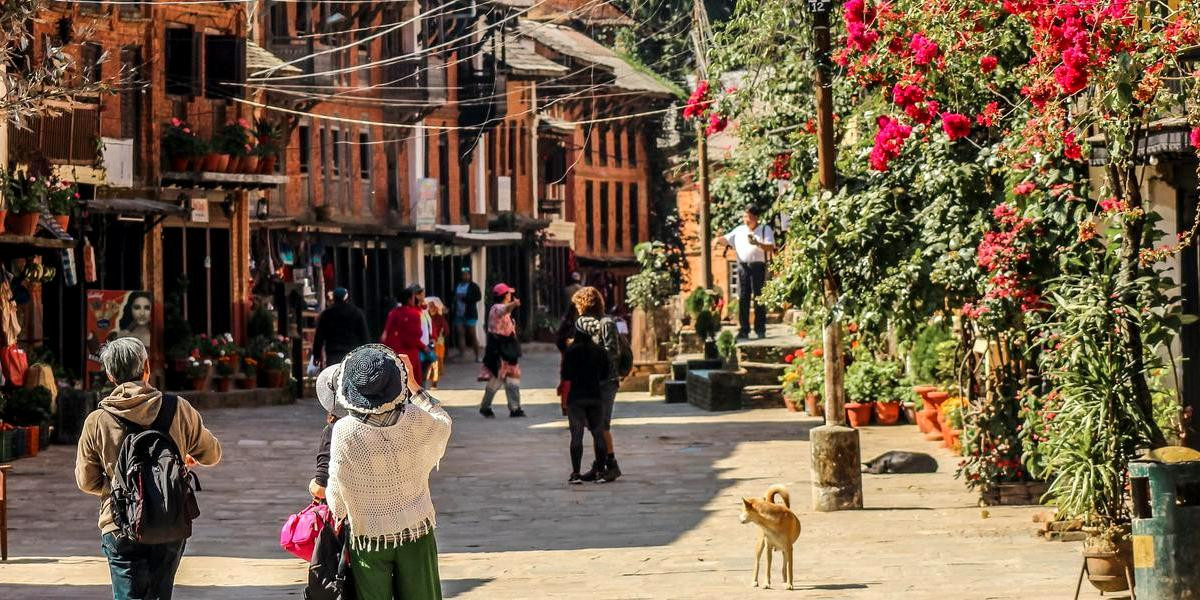
-
Historical Significance: Originally a simple Magar village in the early part of the medieval period, Bandipur developed into a prosperous trading centre and a community with a rich cultural heritage due to its location along the India-Tibet trade route. It flourished in the 18th and 19th centuries, drawing traders, scholars, and artists who built homes, temples, and palaces in the traditional Newari style that still defines the town's aesthetic.
-
Architectural and Cultural Heritage: Bandipur is celebrated for its preserved Newari architecture, including its narrow alleyways lined with traditional bazaars and 18th-century buildings. The town's architecture reflects a mix of cultures, influenced by both the hill and plains cultures of Nepal. Key landmarks in Bandipur include the Bindhyabasini Temple, the library in the village center that dates back to the mid-18th century, and Tundikhel, a great vantage point that once served as a parade ground for Gurkha soldiers.
-
Panoramic Views: From its elevated position, Bandipur offers panoramic views of the Himalayan range, providing a spectacular backdrop to the well-preserved village. On clear days, visitors can see as far as Dhaulagiri in the west to Mount Manaslu and the peaks of the Annapurna range, including Machhapuchhre, and sometimes even the tip of Everest to the east.
-
Tourism and Activities: The town’s economy today is largely driven by tourism. Visitors come to enjoy the quiet and quaint atmosphere, the stunning views, and the chance to walk through history on its cobbled streets. Activities include hiking to nearby hills, such as the hike to Ramkot village, exploring Siddha Gufa (the largest cave in Nepal), and paragliding from the nearby Sarangkot hill.
-
Conservation Efforts: Efforts have been made to preserve the cultural and architectural integrity of Bandipur. It has been largely saved from the modernization seen in other parts of Nepal, with motor vehicles banned from the main bazaar area to maintain its historic character.
Bandipur is a unique destination in Nepal that offers a combination of natural beauty, history, and culture in a serene and picturesque setting. Its charm lies in its ability to preserve the old-world feel while providing a welcoming atmosphere for visitors. Whether you're interested in cultural heritage, nature, or simply a peaceful retreat from the modern world, Bandipur provides an enriching experience that’s hard to match.
Tips for Must See Attractions in Nepal
Exploring the must-see attractions in Nepal is an enriching experience, filled with natural beauty, cultural depth, and historical significance. To make the most out of your trip, here are some practical tips:
Plan According to the Season
-
Best Time to Visit: The best times to visit Nepal are during the spring (March to May) and autumn (September to November) seasons. These months offer clear skies, pleasant weather, and optimal conditions for trekking and sightseeing.
-
Avoid Monsoon: Try to avoid the monsoon season (June to August) for activities like trekking, as trails can be slippery and views often obscured by clouds.
Respect Local Customs and Traditions
-
Dress Appropriately: When visiting temples or religious sites, wear clothing that covers your shoulders and knees as a sign of respect.
-
Learn Basic Etiquette: Simple gestures like removing your shoes before entering someone’s home or a temple and greeting people with “Namaste” can enhance your interactions with locals.
Health and Safety
-
Altitude Sickness: If you plan to trek in high-altitude areas, like the Everest Base Camp or Annapurna Circuit, take precautions against altitude sickness. Acclimatize properly, stay hydrated, and consider carrying medication.
-
Travel Insurance: Make sure you have travel insurance that covers high-altitude trekking and medical evacuation, which is crucial for remote mountainous regions.
Sustainable Travel Practices
-
Support Local Economy: Opt for local homestays, guides, and eateries. Purchasing local products and services helps support the community.
-
Environmentally Friendly Practices: Carry reusable water bottles, avoid plastic, and manage your waste responsibly. Always stick to marked trails to minimize your ecological footprint.
Stay Connected and Informed
-
Local SIM Card: Purchasing a local SIM card upon arrival can be very helpful for navigation and staying in touch. Networks like Ncell or Nepal Telecom offer good coverage across most tourist areas.
-
Check Local Advisories: Keep abreast of local news and travel advisories, especially related to weather conditions or political situations that might affect travel plans.
Transport and Navigation
-
Local Transportation: In cities, taxis and rickshaws are convenient for short distances. For longer distances, consider comfortable tourist buses or domestic flights.
-
Guided Tours: For remote areas and trekking, consider hiring a guide or joining a guided tour for safety and better cultural understanding.
Cultural Immersion
-
Participate in Local Festivals: If your visit coincides with local festivals like Dashain, Tihar, or Holi, participating can provide unique insights into Nepalese culture.
-
Try Local Cuisine: Don’t miss out on local dishes like momos, dal bhat, and Newari cuisine which are not only delicious but also offer a taste of the local culture.
With these tips in mind, your journey through Nepal's must-see attractions will be more enjoyable, meaningful, and respectful towards the natural and cultural environments you are exploring.
Ideal Time to Visit Must See Attractions in Nepal
Nepal's diverse climate offers distinct experiences across its various seasons. Here’s a detailed look at what you can expect during each season if you're planning to visit the must-see attractions in Nepal:
Spring (March to May)
-
Weather: The weather gradually warms up with occasional showers as the season progresses. It’s a beautiful time as the landscape bursts into bloom, especially with rhododendrons, the national flower of Nepal.
-
Activities: Ideal for trekking, as the higher trails are clear of snow. Visibility improves later in the season. It's also a great time for cultural exploration with festivals like Holi and the Nepali New Year.
-
Considerations: This season can sometimes bring hazy skies, which might obscure some mountain views, especially in May.
Summer / Monsoon (June to August)
-
Weather: Summer coincides with the monsoon season, bringing heavy rains, high humidity, and warmer temperatures. The rain primarily occurs in the afternoon and evening, but heavy downpours can last for days.
-
Activities: The lush green landscapes following the rains are stunning. It’s a good time for cultural tours in cities as the tourist traffic is lower and you can enjoy a more relaxed pace.
-
Considerations: Trekking can be challenging due to slippery paths, leeches, and obscured mountain views. However, the monsoon is ideal for keen botanists and those interested in agriculture, as the fields are vibrant and lively.
Autumn (September to November)
-
Weather: This is the peak tourist season in Nepal, thanks to clear skies, pleasant temperatures, and minimal precipitation.
-
Activities: Perfect for trekking with excellent visibility and the ideal climate. This season also hosts major festivals like Dashain and Tihar, offering rich cultural experiences.
-
Considerations: Because it's the peak season, popular trekking routes and tourist spots can be crowded. Booking in advance is recommended.
Winter (December to February)
-
Weather: The coldest season, especially in January, with clear skies. Snowfall is common at higher altitudes, but lower regions remain relatively mild.
-
Activities: Ideal for lower-altitude treks and city tours. Sightseeing in Kathmandu, Patan, and Bhaktapur is pleasant without the monsoon rains and the extreme heat of summer.
-
Considerations: High-altitude trekking can be hazardous due to snow and ice. Many teahouses and lodges in higher areas close during this season.
Each season in Nepal offers unique experiences and opportunities, depending on what you’re interested in doing. Whether you’re looking for adventure sports, cultural immersion, or nature expeditions, planning according to the season will enhance your travel experience significantly.
Magnificent natural beauty, together with extensive cultural history, makes Nepal an appealing location. Nepal presents a wide spectrum of experiences appropriate for every visitor, from the magnificent heights of the Himalayas to the spiritual calm of Lumbini and the historical depth of the Kathmandu Valley. The best visiting times—early spring and late fall—offer perfect circumstances for trekking and enjoying lively cultural festivals. But every year has its special appeal. Visitors to this gorgeous nation will have a enriching and unforgettable experience by means of sustainable travel policies and courtesy for local customs.
FAQs for Must See Attractions in Nepal
Q: What is the best time to visit Nepal for trekking?
A: The optimal months for trekking in Nepal are during the pre-monsoon spring (March to May) and post-monsoon autumn (September to November). These periods offer clear weather and stable conditions, ideal for mountain views.
Q: Are there any cultural considerations I should be aware of when visiting Nepal?
A: Yes, visitors should dress modestly, particularly at religious sites, and seek permission before taking photos of people or cultural events. Removing shoes before entering homes or temples is also a common practice.
Q: Do I need a guide to trek in Nepal?
A: Hiring a guide is strongly recommended for safety and enriching your experience, especially in remote or high-altitude areas like Everest Base Camp or Annapurna Circuit. Guides assist with logistics, and communication, and provide insights into local culture and geography.
Q: What should I pack for a trek in Nepal?
A: Essential items include sturdy hiking boots, layered clothing for variable temperatures, a waterproof jacket, a sleeping bag for cold weather, a first aid kit, sunscreen, and sunglasses. A map and a compass or GPS device are also advisable.
Q: How can I ensure my trip is environmentally friendly?
A: Minimize environmental impact by carrying out all trash, using biodegradable products, avoiding plastic bottles, staying on established trails, and choosing eco-friendly accommodations and services.
Q: What are the entry requirements for visiting Nepal?
A: Most visitors need a visa, available on arrival at Kathmandu Airport or certain land borders. Bring passport-sized photos and the visa fee, which varies based on the duration of stay.
Q: Is travel insurance necessary for Nepal?
A: Comprehensive travel insurance is crucial, particularly if engaging in trekking or adventure activities. Ensure it covers high-altitude trekking and emergency medical evacuation.
Q: Can I use credit cards and ATMs in Nepal?
A: Credit cards are accepted in major cities and tourist areas, but it's essential to carry cash in remote regions. ATMs are accessible in urban areas.
Q: What are some must-see cultural attractions in Nepal?
A: Key attractions include Kathmandu, Patan, and Bhaktapur for their temples, palaces, and museums. Lumbini, the birthplace of Buddha, and Pashupatinath, a significant Hindu temple, are also must-visits.
Q: How do I deal with altitude sickness?
A: Prevent altitude sickness by ascending gradually, staying hydrated, avoiding alcohol, and eating light, high-carbohydrate meals. If symptoms occur, descend immediately and seek medical assistance if necessary.
For the Nepal tour, please click here.
If you are looking for different kinds of Nepal Tours or Trekking Packages, feel free to contact us.









